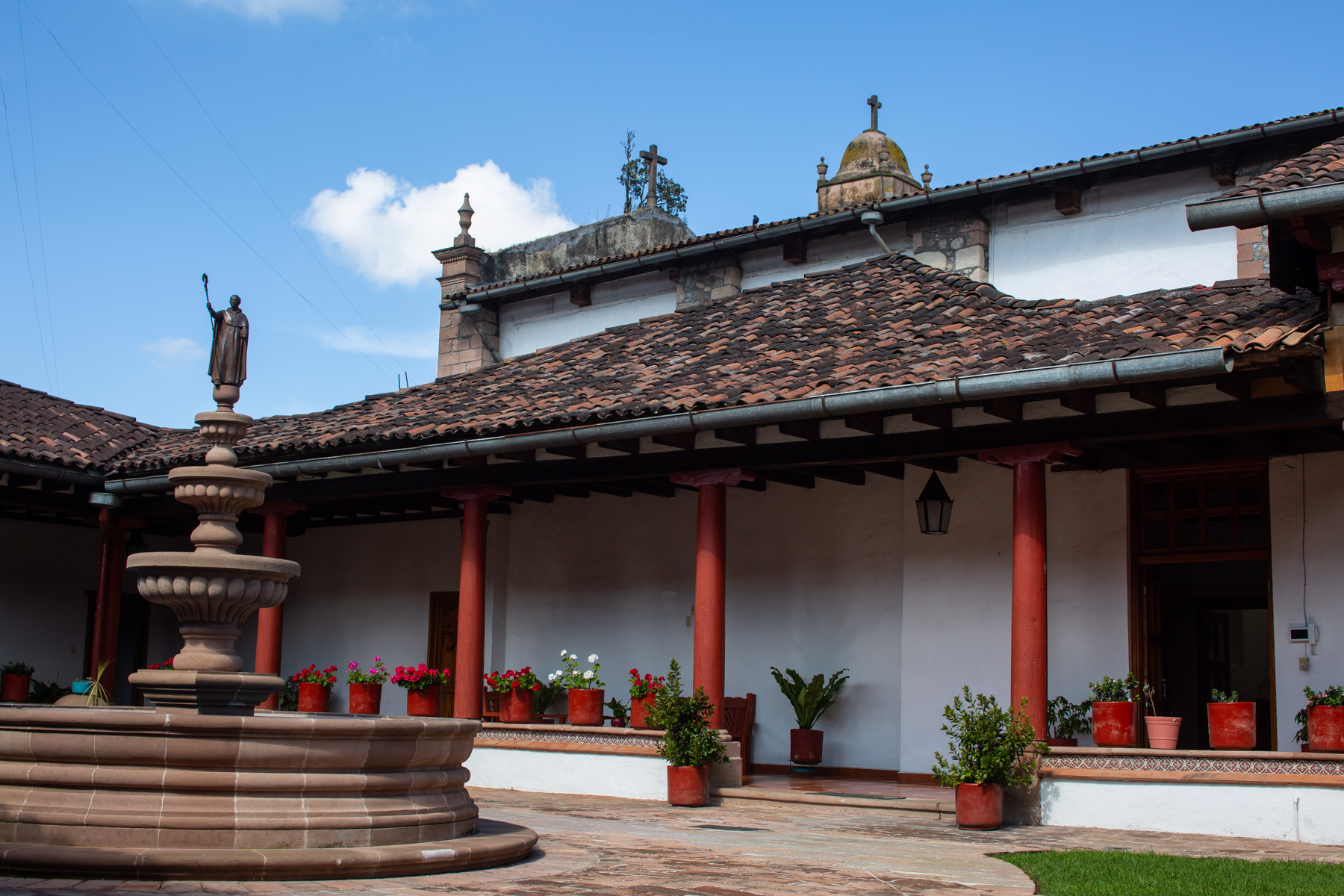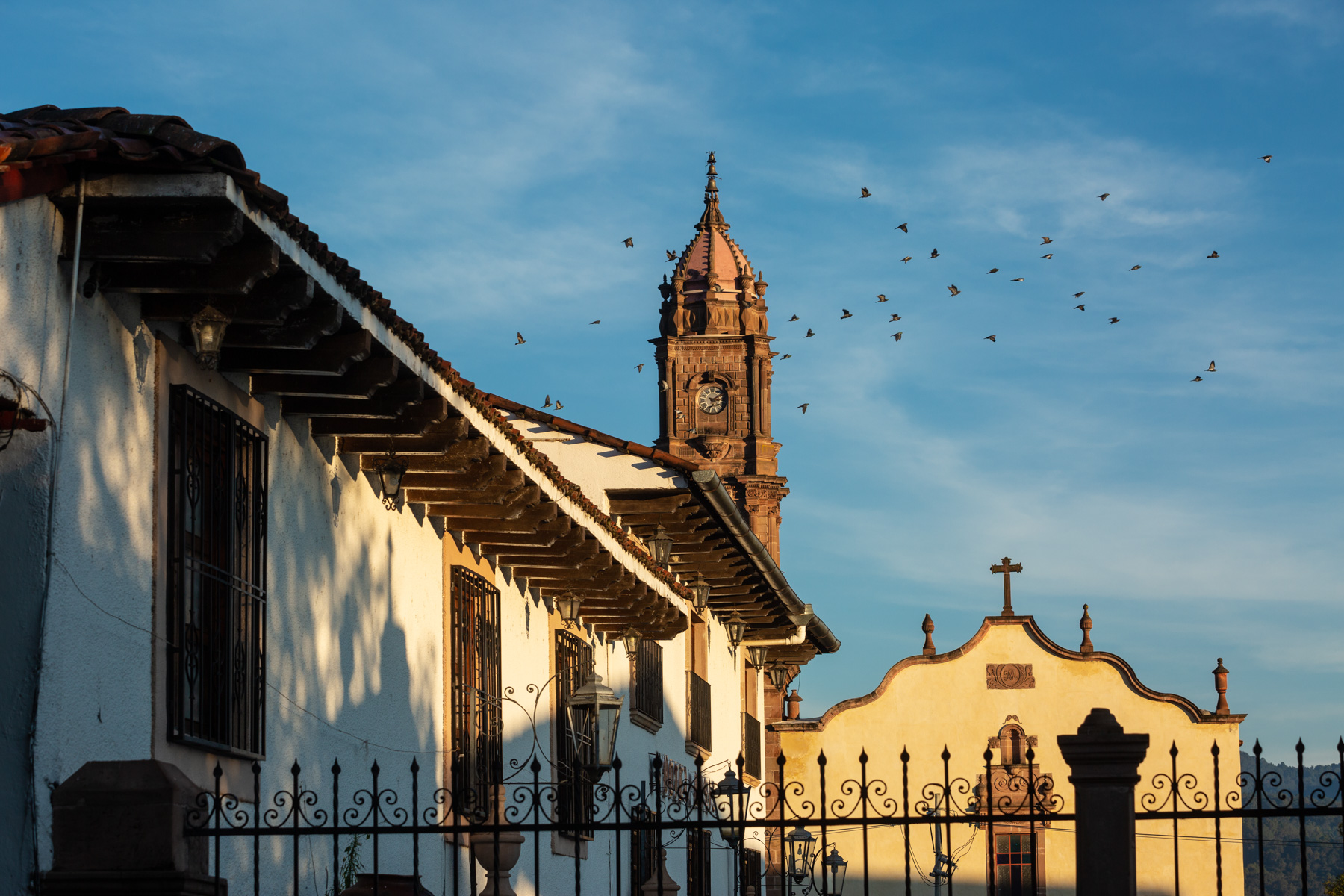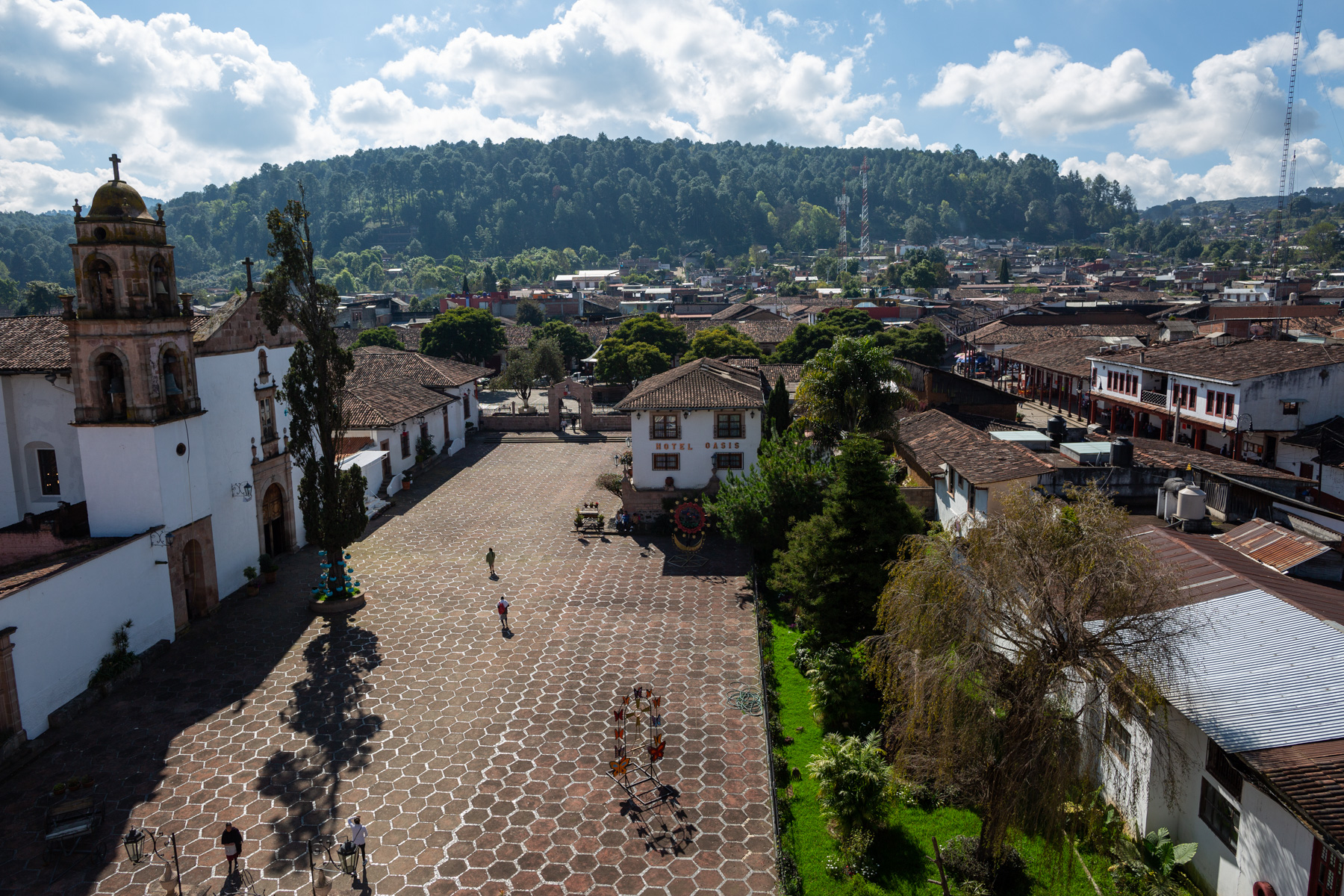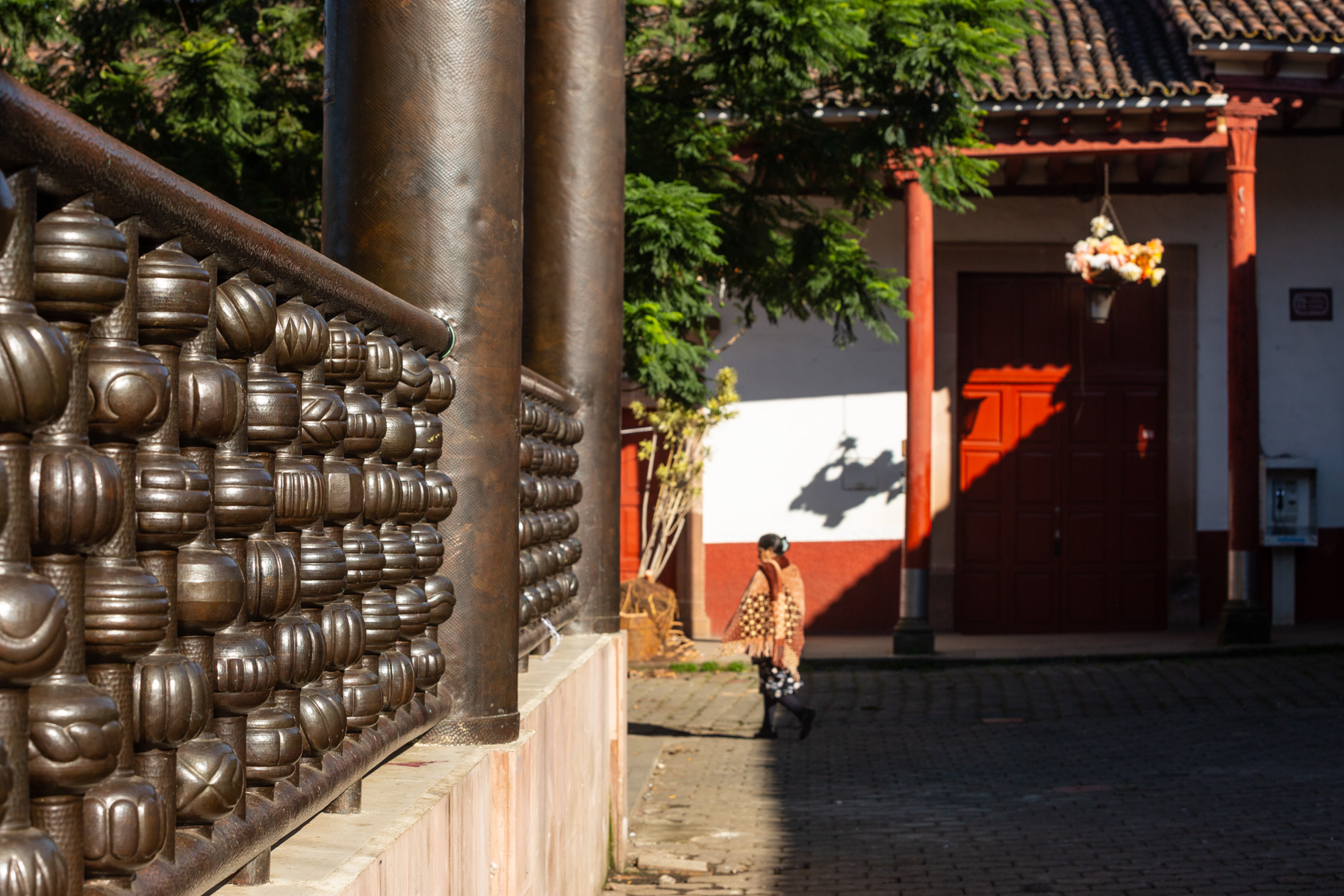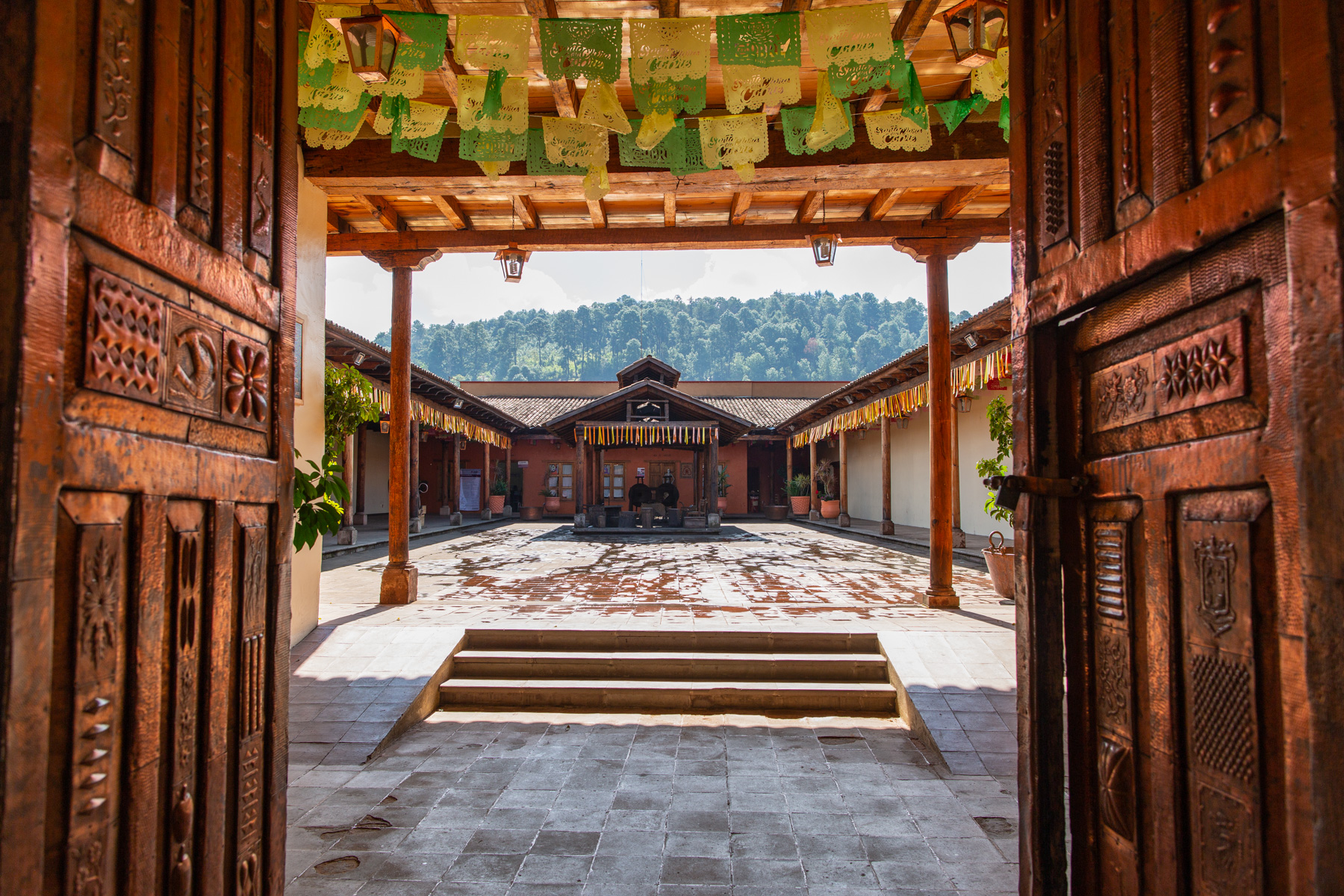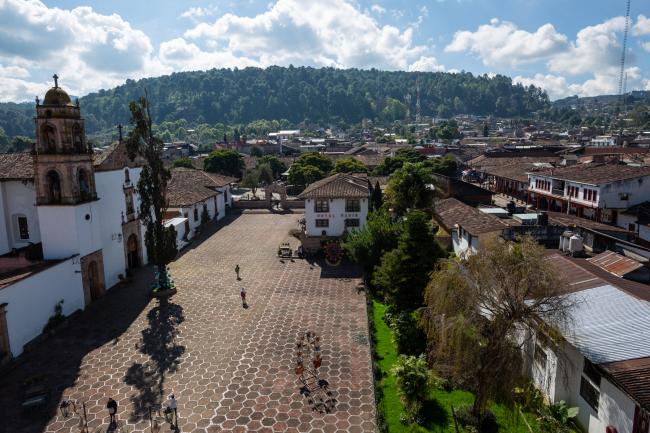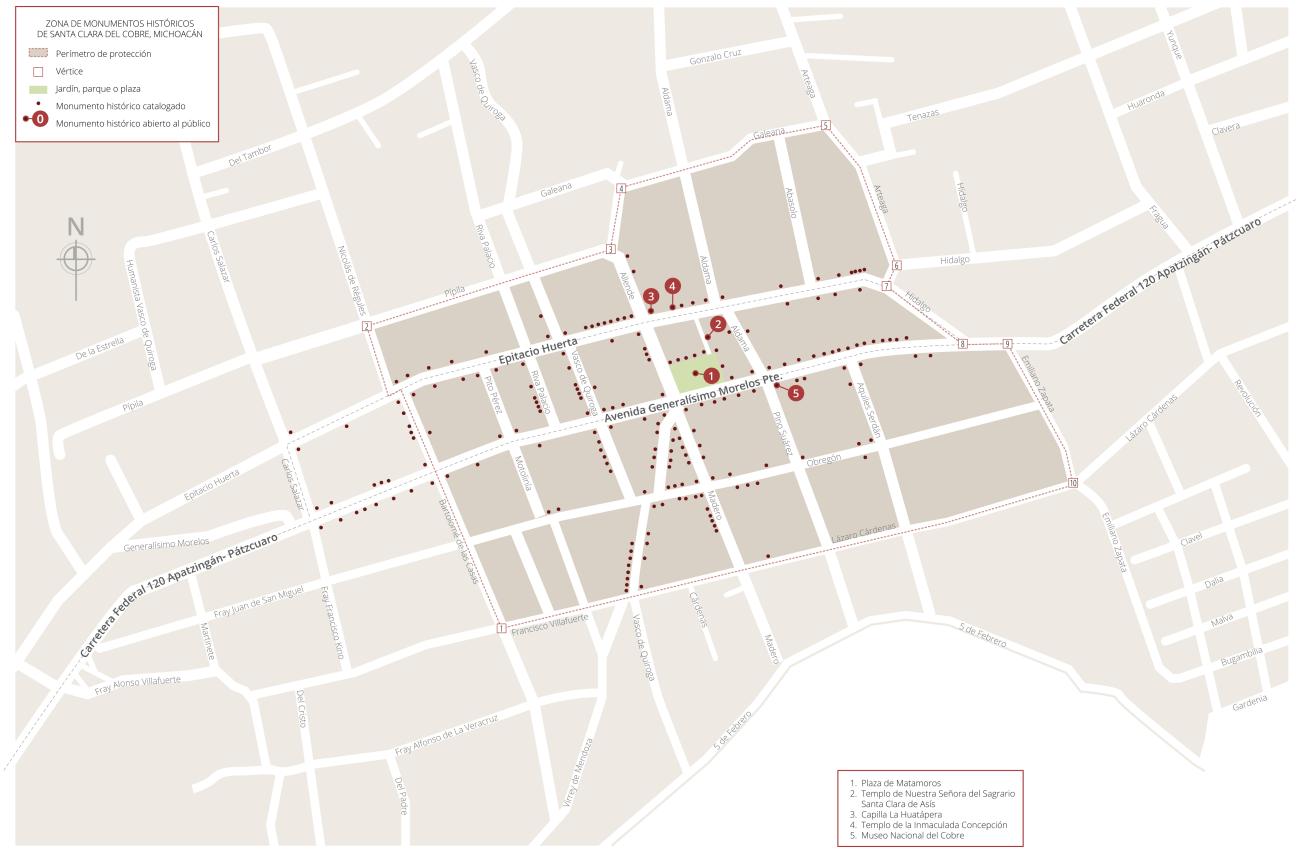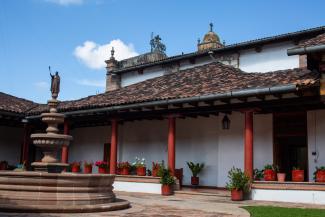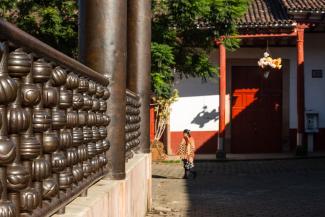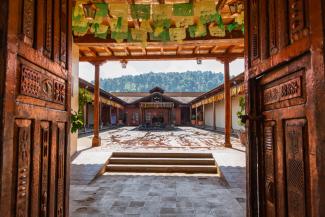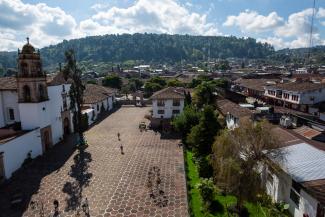Santa Clara del Cobre
Historical Monuments Zone
Abstract
This is a town in the heart of Michoacán state, established near the site of a settlement of pre-Hispanic origin that was part of the Tarascan empire since at least the 15th century. The old town is between the present-day Santa Clara and Opopeo, built on an ancient lava flow at the foot of Cerro de la Cantera.
The occupation of this area by the Spanish is recorded as early as the year 1530. There are reports of interest in the area due to the richness of its forests and its proximity to Pátzcuaro, thanks to a document in which Vasco Vázquez de Quiroga, the first bishop of Michoacán, asked the Spanish encomenderos and the Indigenous chiefs and people about the state of the copper mines in the region known as “Tierra Caliente.” This zone was an obligatory stopping point as it was on the trade route that began on the Michoacan coast, and it saw intensive activity during the viceregal era.
Copper was known of and worked in this place since pre-Hispanic times. This is clear from the numerous objects of personal adornment that have been recovered from archeological digs, in which abundant fragments of slag from the metal smelting process known regionally as querenda have also been found.
Scholars report that it was as a result of the Christianization of the Indian towns in the vicinity that the community of Santa Clara Xácuaro was founded around the year 1530, commissioned by Fray Francisco de Villa Fuerte. In 1533, the Royal Certificate was granted, assigning it the name Santa Clara de los Cobres. It was named Santa Clara of Portugal in honor of Bishop Cayetano of Portugal; after the Revolution it was called Villa Escalante in honor of General Salvador Escalante; finally, in 1981, the town acquired its present name, and today only the municipality is known as Salvador Escalante.
At the beginning of the 17th century, the Royal Foundry administered by the Spanish crown was established in Santa Clara del Cobre. This place was selected due to its abundant pine forests and the nearby streams, both essential resources for the operation of the crucibles. In addition, its location made the transport of ore profitable, which continued throughout the 18th century.
By 1800, there were eight foundries in the vicinity of Santa Clara and the town of Opopeo, and it was around that time that the metal smelting system was changed to furnaces with water-operated bellows. Today, the smelting of copper is carried out in a furnace dug out of the ground. Workshops can be visited where this artisan process, which has undergone few changes over the centuries, is shown to visitors.
Santa Clara is predominantly Catholic, and worship takes place in the church of the Huatápera, which is said to have been founded by Bishop Vasco de Quiroga, the parish church of the Purísima Concepción de María and the parish church of Nuestra Señora del Sagrario. The remaining civil buildings are of particular note for their harmonious character.
Even today the social organization preserves the traditional system of cargos, which establishes a hierarchy of positions with obligations and responsibilities linked by kinship relationships and governed by pintekua, meaning “custom.” This determines the structure of the town’s highest authority, the neighborhood leaders, the varas who are at the service of the Virgin of the Immaculate in Huatápera, the huanonchos who support the latter, and the bearers of Holy Week, who provide support on the occasion of this festivity. Likewise, there are saints that are inherited by different families in the neighborhoods: San José, San Agustín, San Miguel, San Nicolás, Las Ánimas and San Francisco. The protocols surrounding these cargos are a significant part of local life.
The inhabitants of Santa Clara won acclaim for their involvement in the struggle for Independence, following the beliefs promoted by Manuel Lloreda, a local priest, who shared the ideals of Miguel Hidalgo and José María Morelos y Pavón. Likewise, during the Mexican Revolution, the first uprising of Michoacán in support of Francisco I. Madero took place in Santa Clara del Cobre. Salvador Escalante organized the contingents of men who fought in the Mexican Revolution, and in memory of that action, in 1981 the municipality was given his name.
Santa Clara del Cobre has also been mentioned in literature, as it was the birthplace of the celebrated principal character of the picaresque novel La vida inutil de Pito Pérez (The Useless Life of Pito Pérez) by the Mexican writer José Rubén Romero, published in 1938.
The Zone of Historical Monuments was declared by the federal government on March 23, 2001 and comprises 26 blocks with buildings from between the 16th and 19th centuries. Together they are of special relevance for the harmony of this area, whose conservation is of national interest.
These buildings are organized in an irregular layout that reflects the topography and the streams at each end of the settlement. Of particular note are the buildings that surround the main square with their porticoes, which have stone bases supporting wooden pillars that in turn provide the footings for the very large beams that lie perpendicular to the rafters of the porticoes, both of which, in turn, support the roof structure.
These transitional areas between public and private space serve to protect pedestrians from bad weather, and are also employed for the exhibition and sale of artisanal products, especially the traditional local copper crafts.
The buildings are arranged on blocks that were originally very large, to provide space for the kitchen gardens and courtyards with corridors that connected the different living spaces. The houses were built with stone plinths’, adobe walls, and an earthen plaster finish, and varied in color. The colors were unified in the late twentieth century to achieve their current appearance: a white background with a red ocher ocher strip along the lower part of the wall. The doors, gates, windows and balconies are rectangular and are made of wood. The sloping roofs with a wooden structure and red clay tiles are characteristic of this town. In order to preserve the historical legacy of the town, it was designated a Zone of Historical Monuments in the year 2000.

